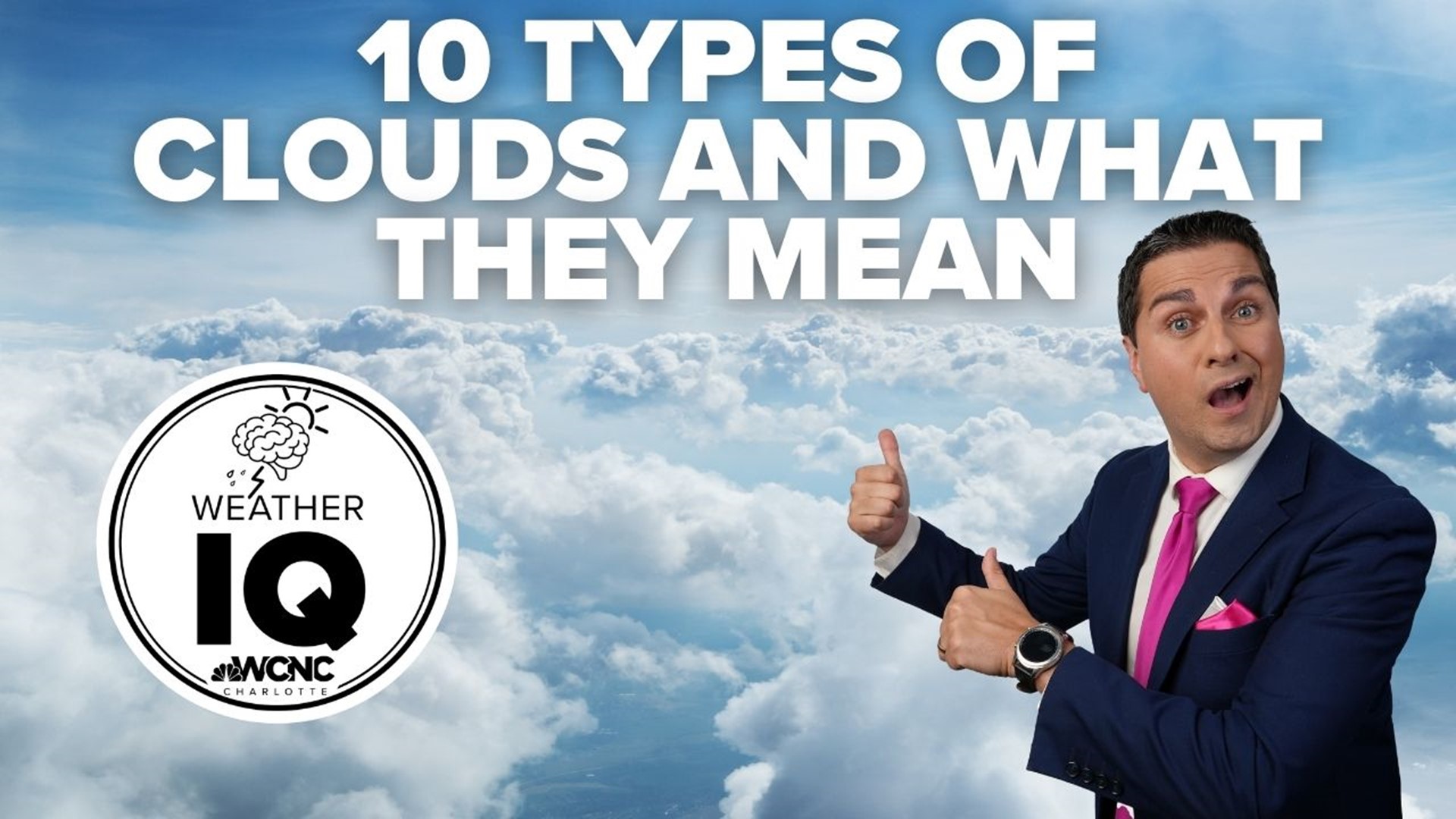CHARLOTTE, N.C. — We're going back to the basics in this week's Weather IQ by learning about clouds. Everything from the basic types to advance combinations and what they mean.
In school, we all learned about the three basic cloud types: Cirrus, cumulus and stratus. But there are dozens of others that range from common to rare. Did you know clouds are divided into four main designations? Low level, mid-level, upper level and clouds with vertical growth.
Here are 10 basic cloud types and what they mean
Upper Level Clouds:
Cirrus clouds are those wispy clouds you see on a relatively clear day. These are so high in the atmosphere that they are made up of ice crystals. Cirrus literally means curling lock of hair, derived from Latin.
Cirrostratus clouds make the sky look milky. They are easily distinguished because the sun can be seen through them which is not the case at the low to mid levels. These can sometimes mean rain is a day away.
Cirrocumulus clouds live at the same height and can have these ripples and fish scale-like appearance. They are also referred to as a Mackerel Sky. These in the tropics can sometimes mean a tropical storm or hurricane is coming.
RELATED: Weather IQ: How hurricanes form
Mid-Level Clouds:
Altocumulus is similar to cirrocumulus, just lower in the atmosphere. When these clouds cover the sky, the term mackerel sky can be used as well. Usually associated with near-term fair weather, these clouds can sometimes mean rain is hours away representing instability in the mid levels of the atmosphere.
One secondary form of this cloud is lenticular clouds that form over mountains.
Altostratus clouds are responsible for overcast days since they usually cover the whole sky. Very little sun shines through these greyish clouds and can be a precursor for rain.
Low Level Clouds:
Stratus clouds come from the Latin prefix strato- which means layer. These layered clouds are low to the ground and don’t let any sun through. If these clouds lower to the ground, it's called fog.
Stratocumulus clouds are often joined together and cover more than half the sky allowing areas of sun to peer through. They look like a combination of fair weather cumulus mixed with stratus (so the cloud was appropriately named).
When stratus clouds start producing rain, they are then called Nimbostratus. The prefix Nimbus means rain cloud. There are only two types of rain clouds. Most non-thunderstorm precipitation is produced by nimbostratus. The type of rain associated is usually light to moderate.
Another name for the rain that follows clusters of thunderstorms is called stratiform precipitation, which is nimbostratus.
Clouds with vertical growth:
Cumulus clouds come from the root word meaning heap. These are often referred to as cotton ball-like clouds living at low levels. But these clouds can grow vertically reaching into the upper levels.
When they start to grow taller and larger, they are heading to their final stage, cumulonimbus or thunderstorm clouds. This is the second type of rain cloud. Cumulonimbus clouds can reach up to 50,000 feet into the atmosphere. They are the only cloud that has the potential to produce extreme weather like torrential rain, lightning, hail, damaging winds and tornadoes.

